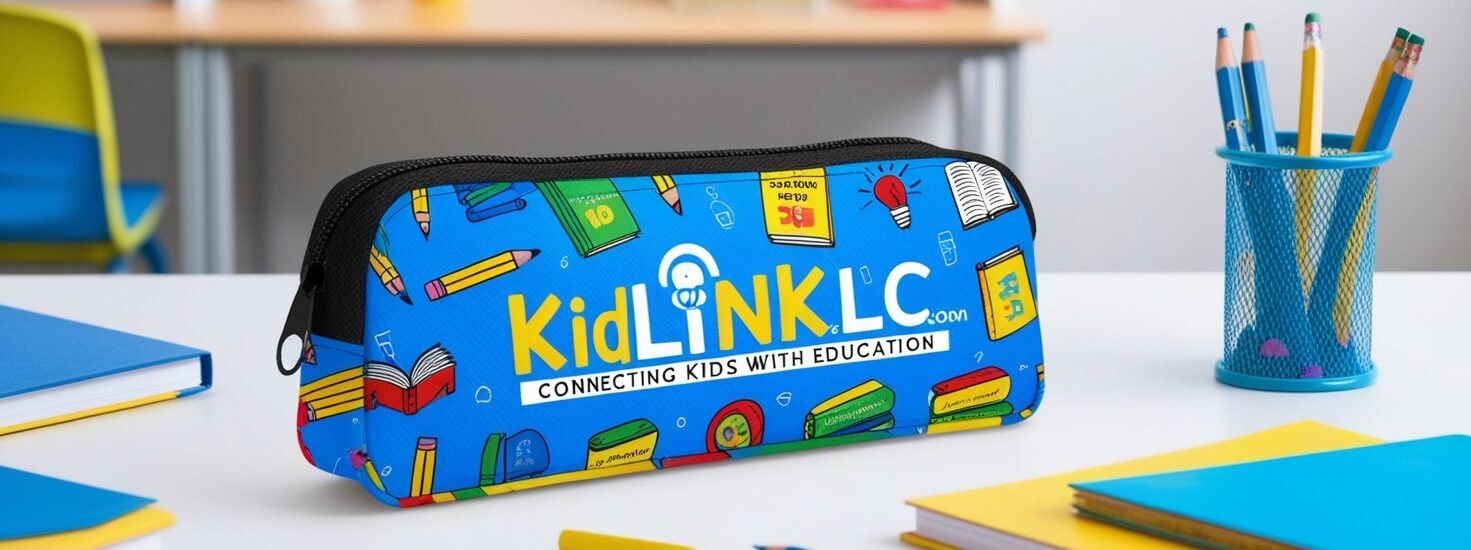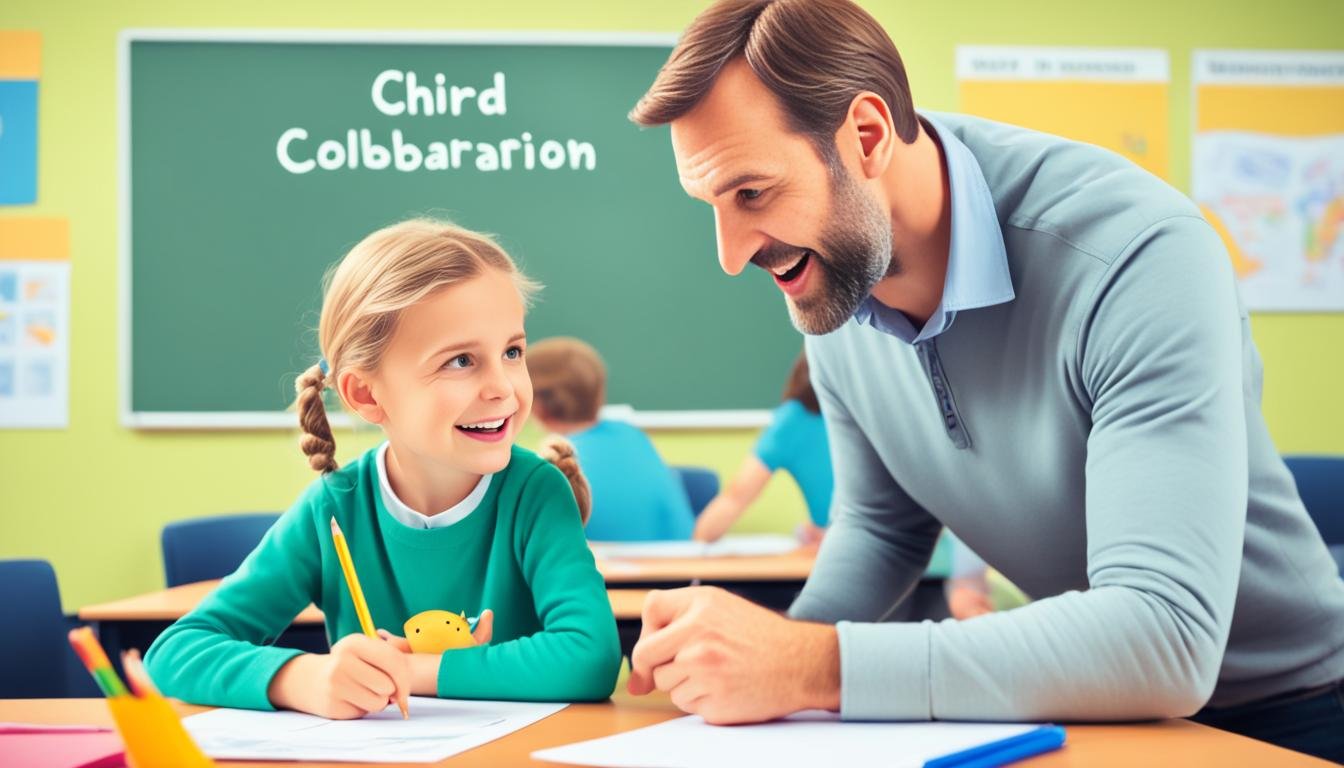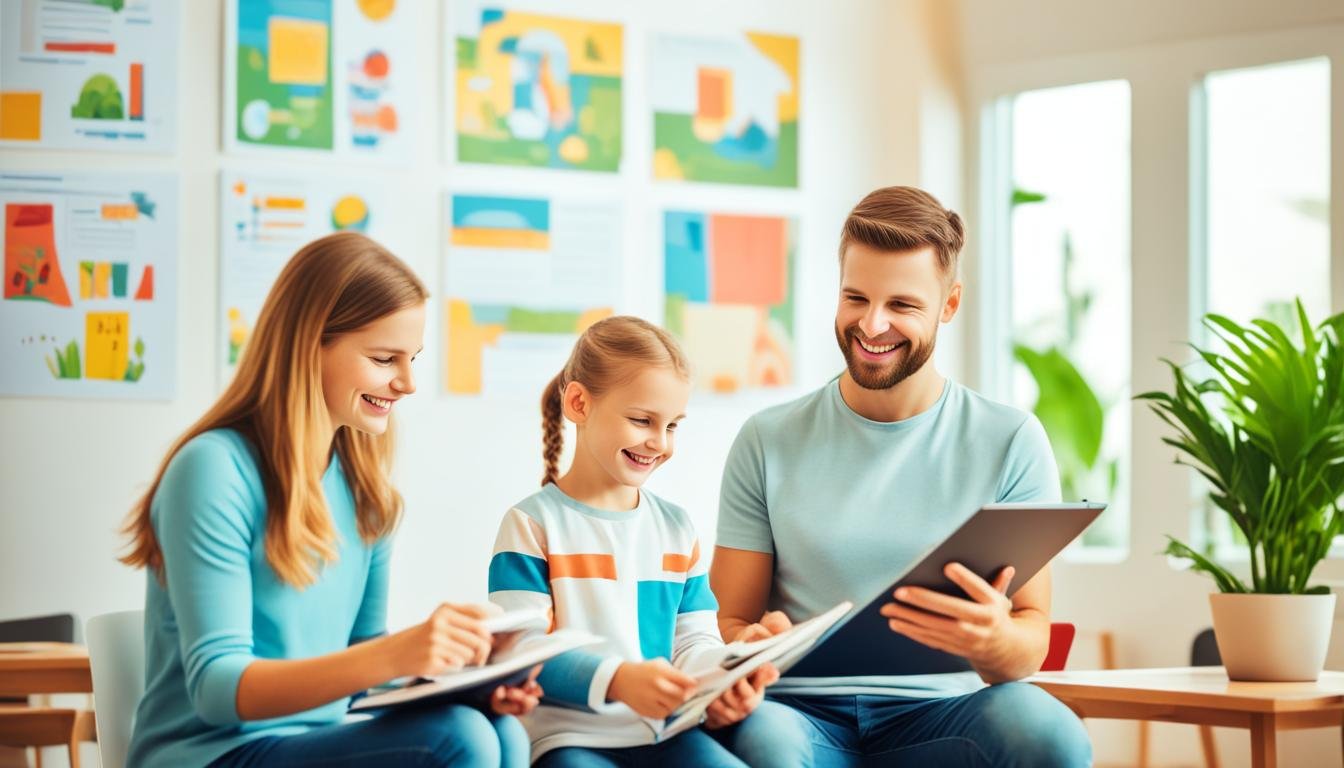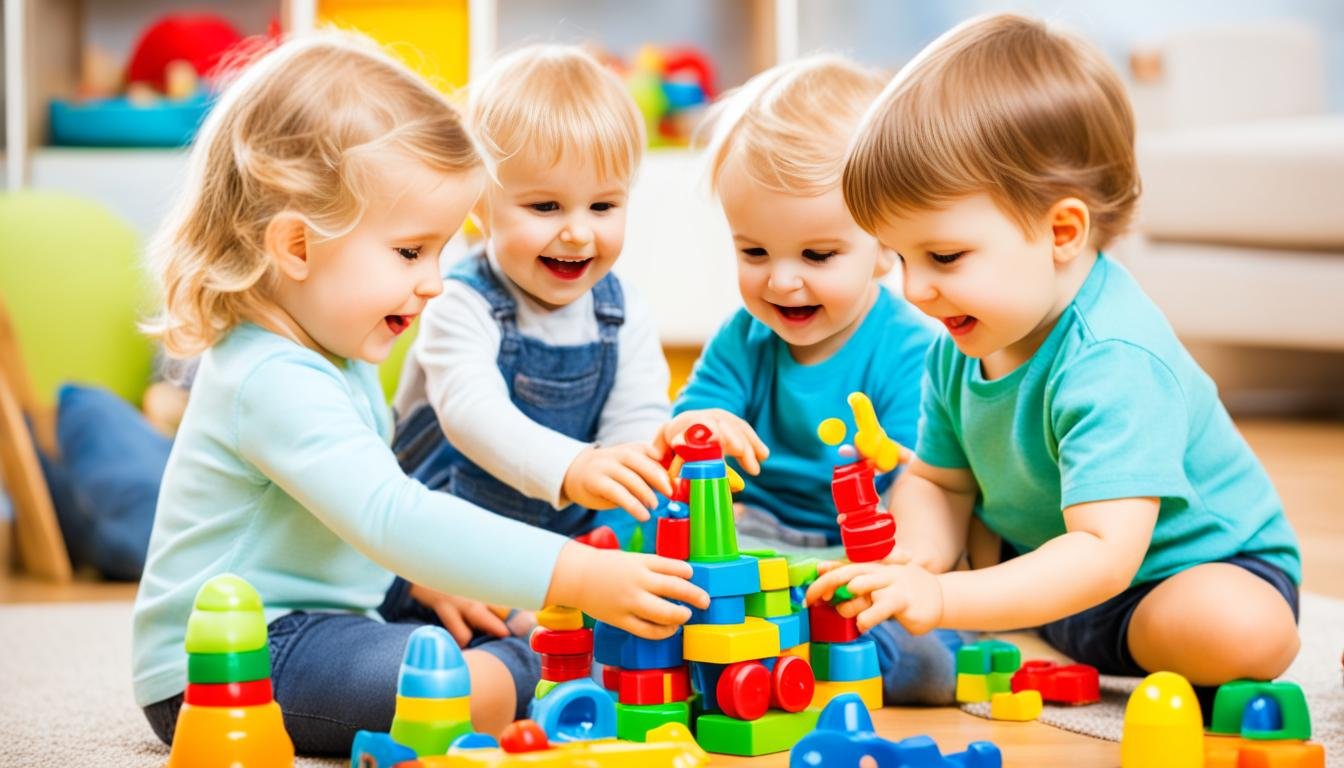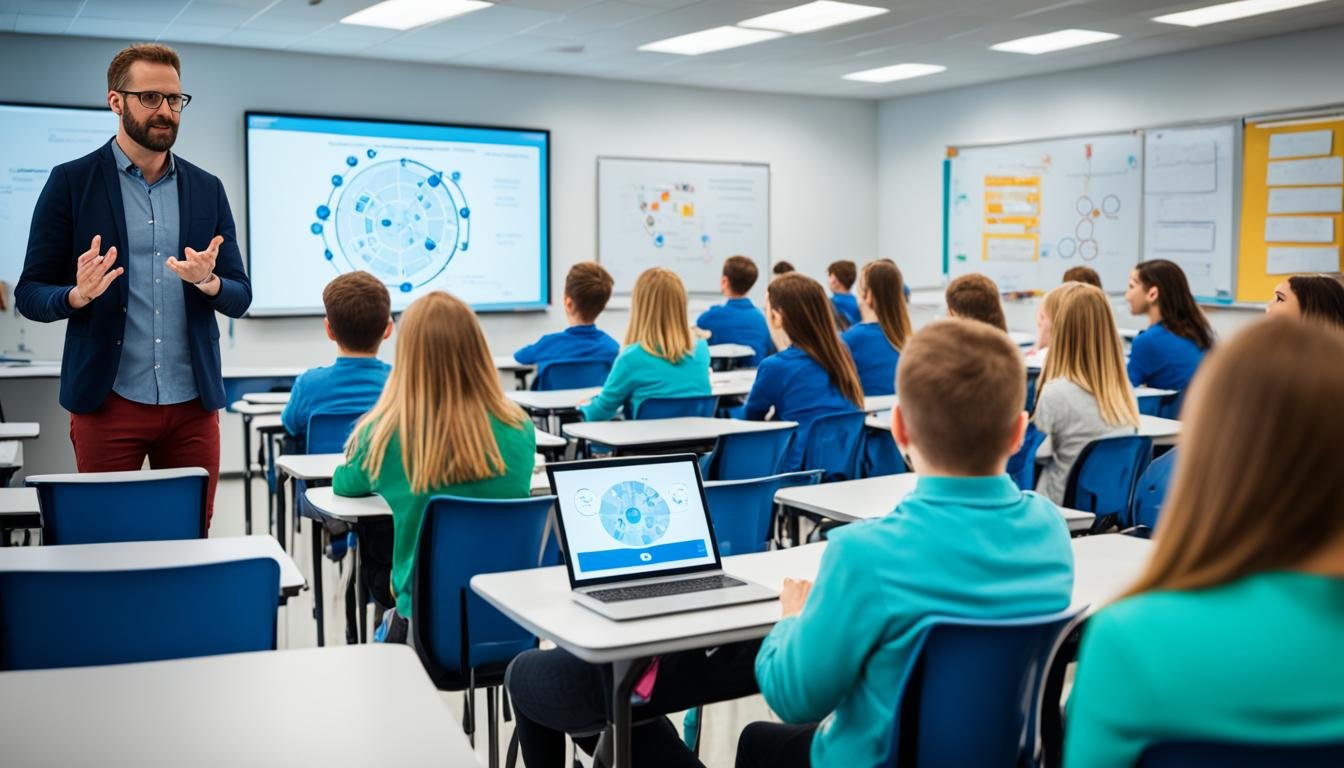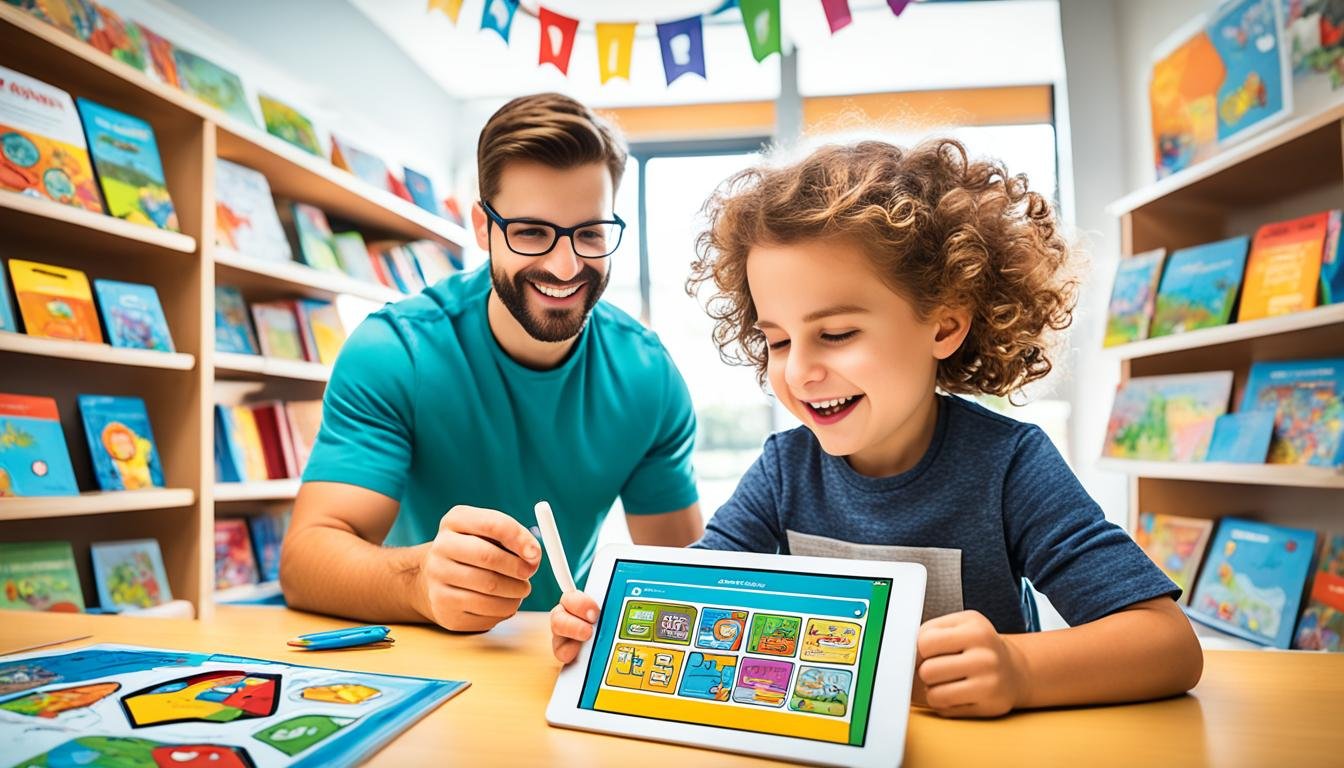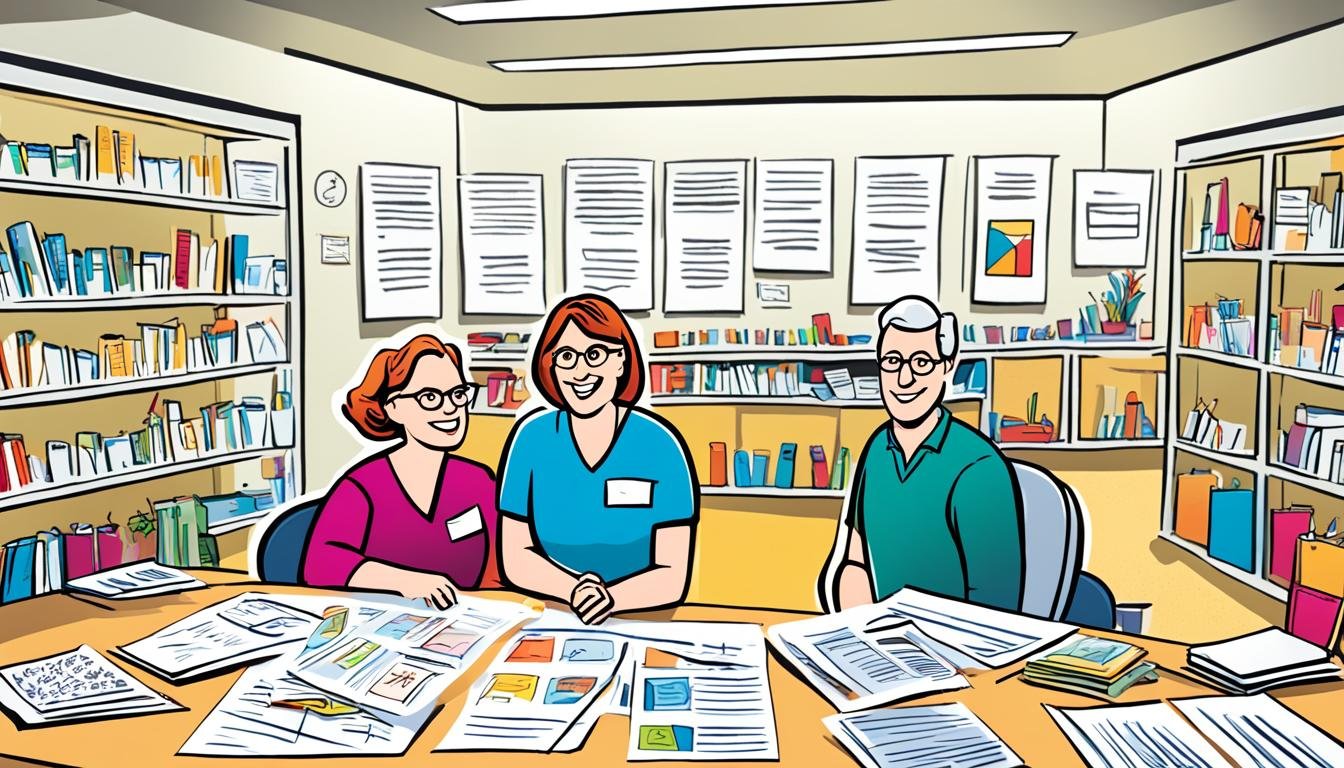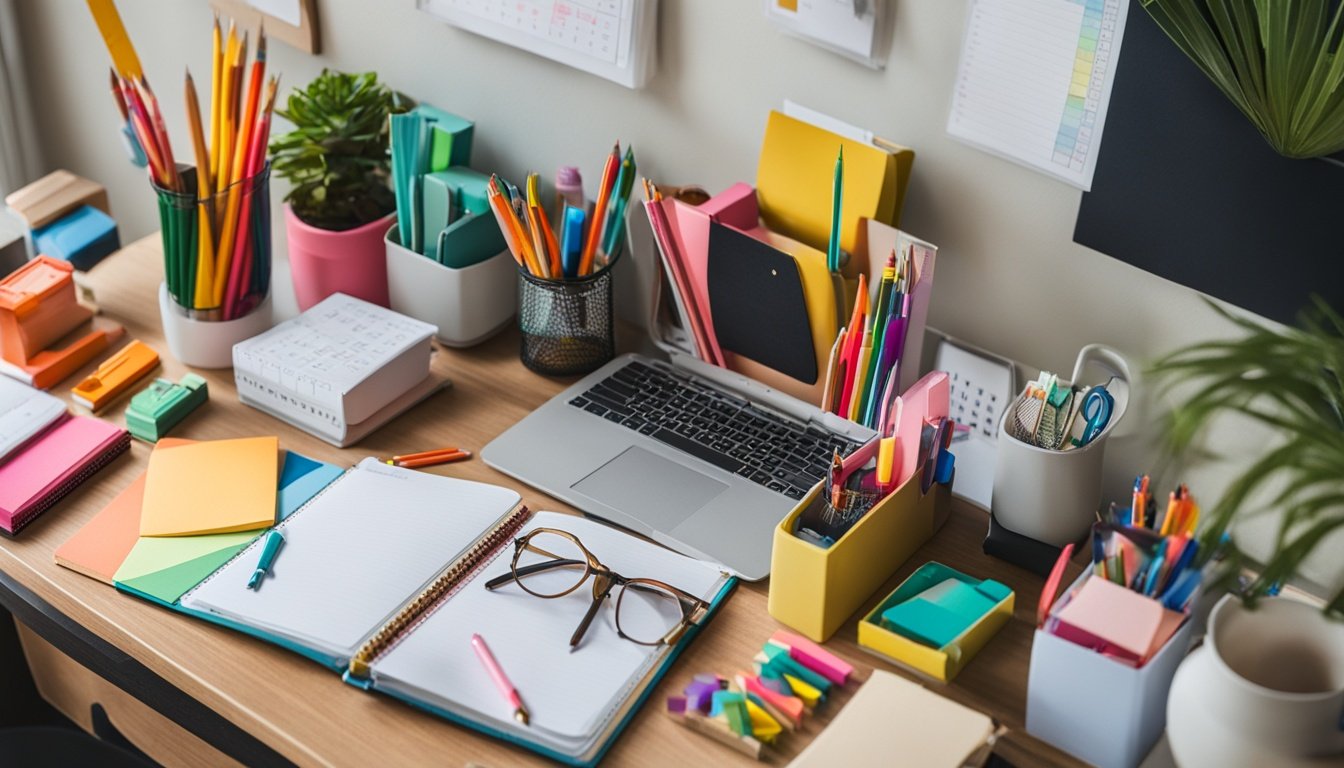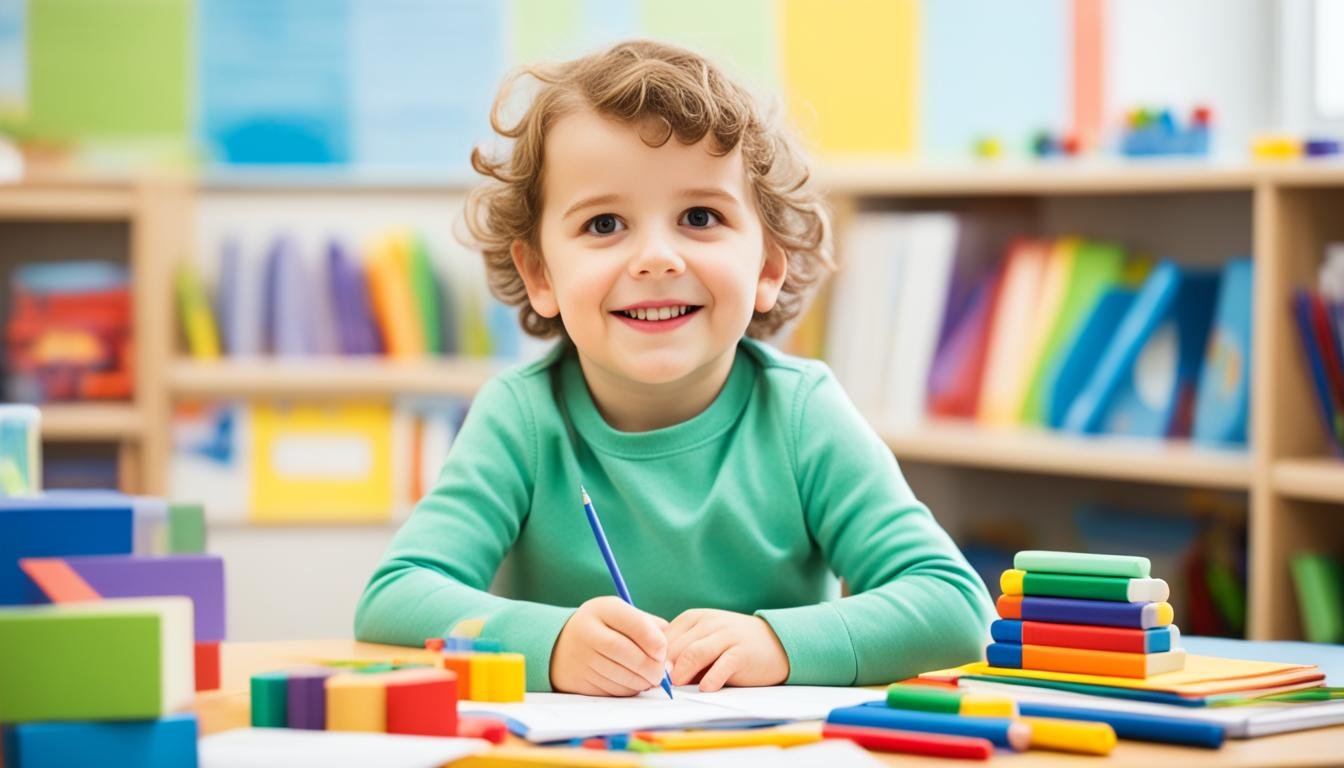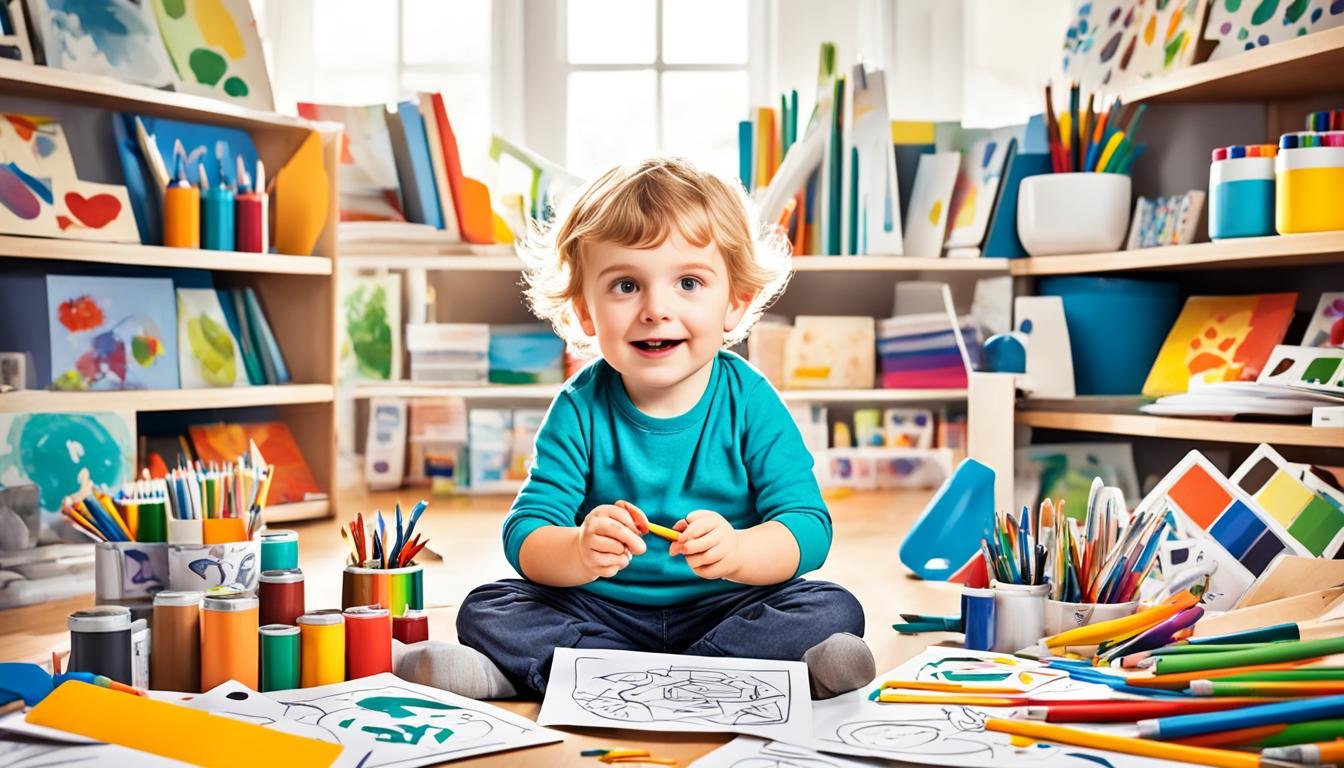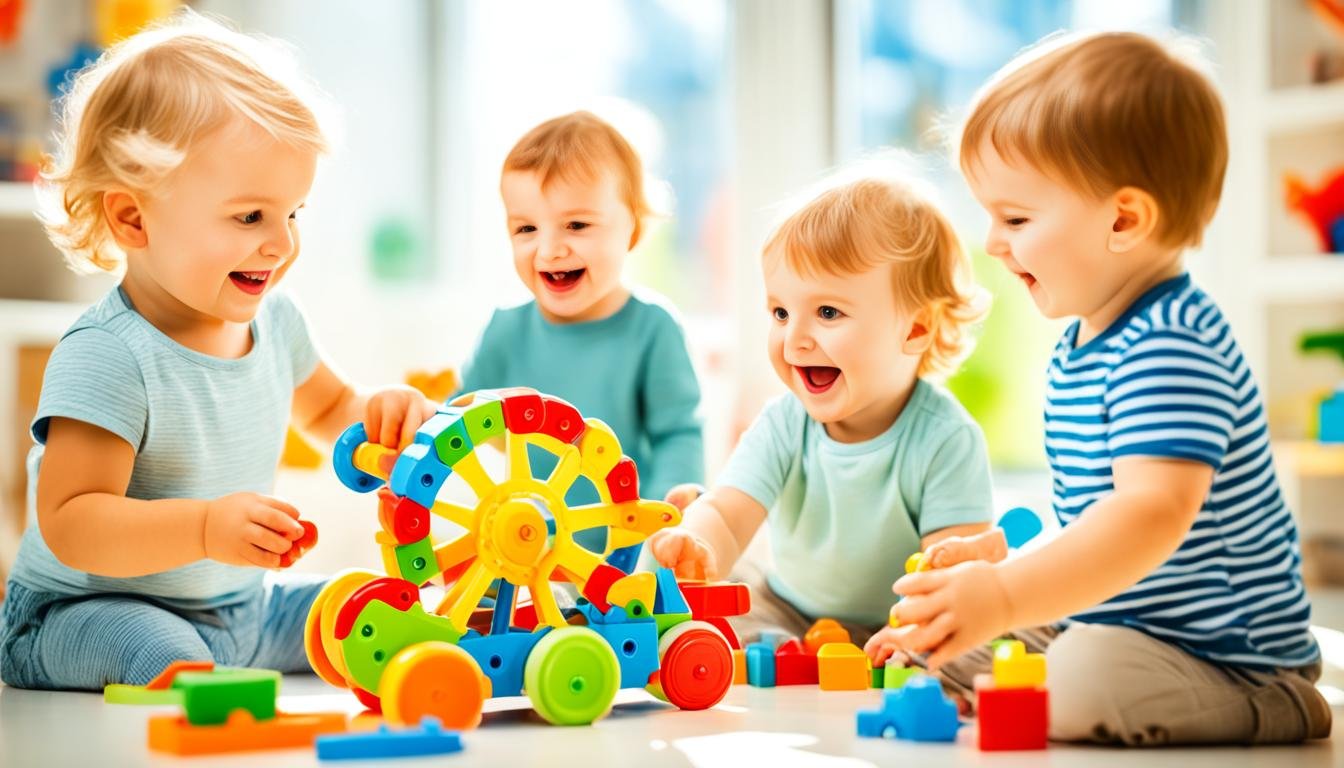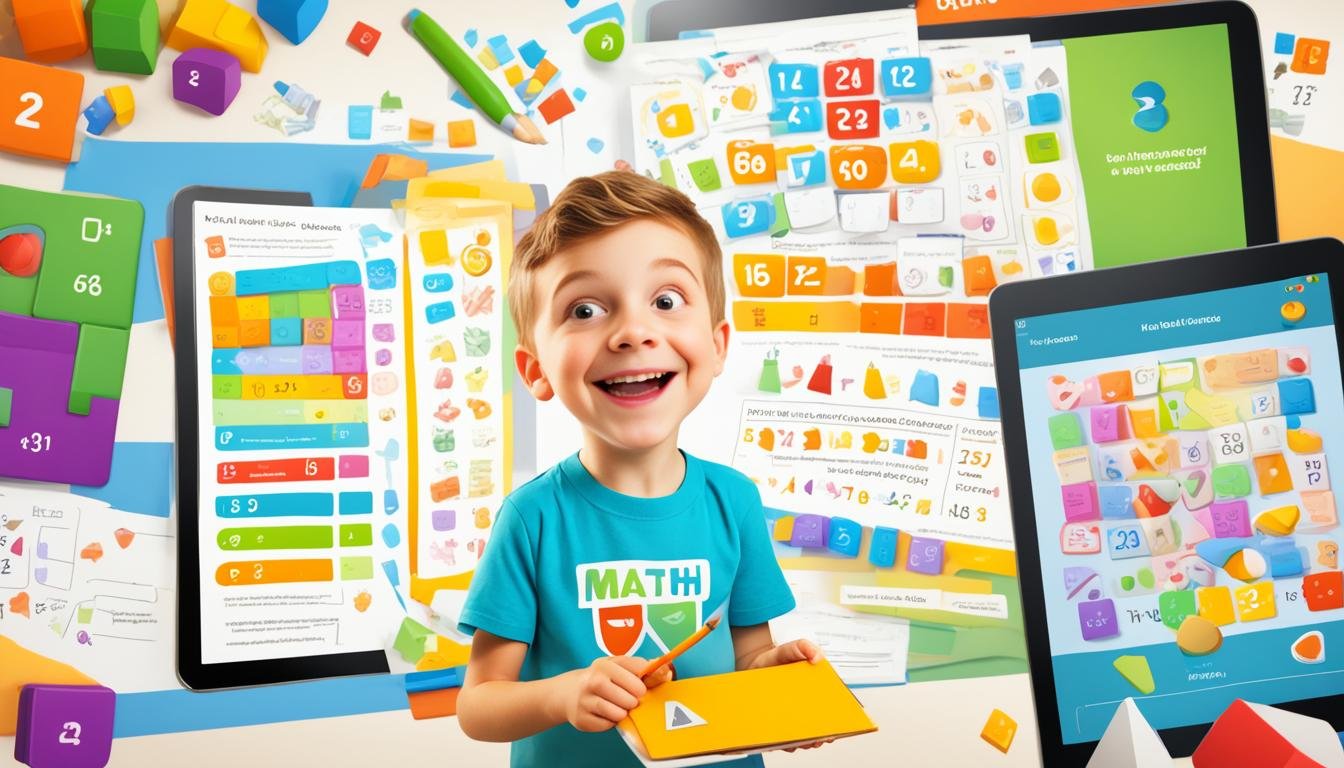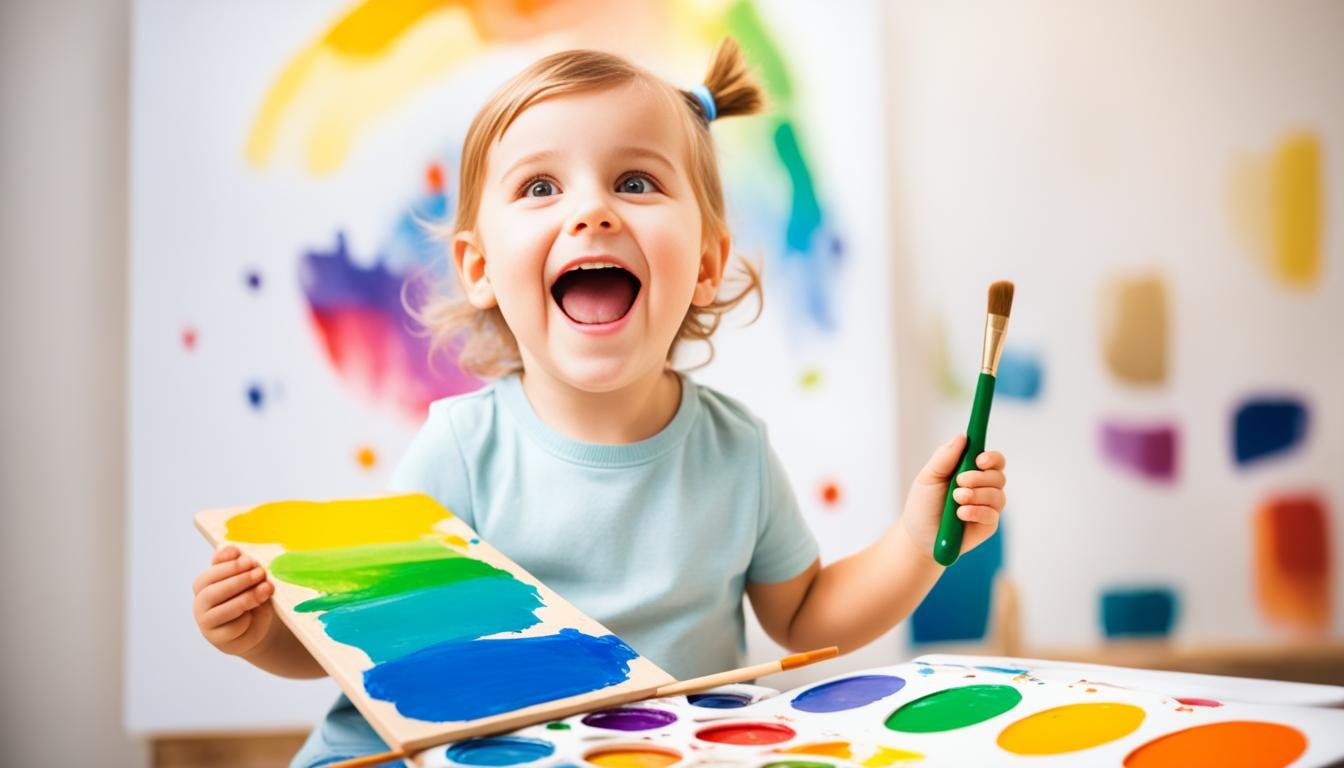Have you ever thought about why some kids pick up on things faster than others? Could it be because they move more? Today’s schools focus a lot on academics, leaving the benefits of exercise behind. But, new studies show that exercise does more than keep the body fit—it also helps with learning.
This article will explore how moving around helps the brain work better. It shows how being active can make learning easier and more fun for your child.
Key Takeaways
- Physical activity enhances learning by improving cognitive function.
- Regular exercise contributes to better academic performance.
- Movement and brain function are closely linked.
- Exercise can help reduce stress and anxiety, benefiting mental health.
- Incorporating physical activity in education fosters an engaging learning environment.
- Active children tend to retain information better and perform well academically.
Understanding the Connection Between Physical Activity and Learning
Physical activity is key to a child’s growth. Studies show a strong link between exercise and memory. Regular workouts boost brain areas that help with focus and remembering things.
Movement is vital for brain health. It increases blood flow to the brain, giving it the nutrients it needs. This supports learning and helps kids do well in school. Schools that encourage active play see better grades, showing how exercise helps in education.
https://www.youtube.com/watch?v=oW-vWpcNdrU
Adding exercise to daily life makes learning better. Active kids solve problems and think creatively. Moving in class makes learning fun and helps everyone do better.
| Aspect | Physical Activity | Learning Outcomes |
|---|---|---|
| Memory Retention | Improves through regular physical engagement | Enhanced ability to recall information |
| Cognitive Function | Boosted by aerobic exercises | Leads to improved problem-solving skills |
| Academic Performance | Higher levels of physical fitness | Often correlate with better grades |
Putting physical activity first helps kids stay healthy and do well in school. Knowing how exercise helps learning lets you create a great learning space for your child.
Physical Activity Enhances Learning
Studies show that regular physical activity boosts learning a lot. When students exercise, they get better physically and mentally. This helps them do well in school.
Exercise helps the brain work better. It increases blood flow, bringing more oxygen and nutrients to the brain. This makes students think better and learn more.
Physical activity is great for math and reading. These subjects need strong thinking skills. Students who exercise often do better in school. This shows how exercise helps students learn more in class.

The Science Behind Movement and Brain Function
Physical activity changes how our brains work. Studies show it does more than just help our bodies. Regular exercise boosts our brain’s ability to think, remember, and solve problems. This is key for kids to learn better.
How Exercise Affects Cognitive Performance
Many studies link exercise with better brain function. When we move, our brain gets more blood, which brings it the nutrients it needs. This helps make brain-healthy substances and keeps our brain sharp.
Exercise also helps us focus better. This means students can pay attention longer in class and during activities.
The Role of Aerobic Fitness in Learning
Aerobic fitness is crucial for brain and learning benefits. Running, swimming, and cycling increase heart rate and improve heart health. Kids who exercise regularly get better at remembering things and understanding new info.
This exercise not only makes our bodies stronger. It also helps our brains grow and work better, which is important for doing well in school.
Benefits of Physical Activity for Children’s Mental Health
Regular physical activity is key for kids’ mental health. It helps parents and teachers see exercise as a way to boost emotional health.
Reducing Stress and Anxiety Through Movement
Exercise is a great way for kids to deal with stress and anxiety. When they move around, their bodies make endorphins, which make them feel better. These chemicals help reduce stress and make kids feel calm.
This helps them handle school and home pressures better.
Improving Mood and Emotional Well-being
Being active has big benefits for emotional health. It makes kids happier and more balanced. Active kids feel better about themselves and don’t feel lonely or sad as much.
This link between exercise and mental health motivates families to make being active a priority.

The Importance of Regular Physical Activity in Education
Regular physical activity in schools is key for healthy students and better thinking skills. Adding movement to the classroom helps students stay engaged and do better in school. Schools that focus on physical activity see big benefits for learning and health.
Integrating Movement into the School Curriculum
Making movement a part of school is more than just gym class. Teachers and leaders can use different activities to keep students moving all day. This makes learning more fun and effective. Simple steps like active lessons or short breaks can change how students see school.
- Using games to teach math and science.
- Getting students to move during class, like standing or walking while they talk.
- Adding short exercises between lessons to help students focus again.
Physical Education and Its Role in Academic Success
Physical activity is linked to doing well in school. PE classes teach teamwork, discipline, and how to set goals. This helps students think better and learn more easily. Studies show that exercise boosts skills important for math and reading.
Effects of Exercise on Learning Outcomes
Understanding the effects of exercise on learning is key for boosting kids’ education. Regular physical activity brings big cognitive benefits, like better focus, problem-solving, and creativity. It helps kids do well in school and shows why exercise should be part of their daily life.
Cognitive Benefits of Regular Participation
The benefits of exercise for cognition are huge, not just for the body. Studies show that being active makes the brain work better. It boosts blood flow to the brain, giving it the oxygen and nutrients it needs to perform well.
Regular exercise helps kids think more critically and do better in school. Kids who stay active are sharper and can focus better.
Impact on Memory Retention
There’s a strong link between being active and remembering things better. Exercise makes learning stick and helps keep memories strong. When kids move more, their brains make a protein that helps with memory and learning.
This shows how good exercise is for keeping information in mind and doing well in school. For more learning resources, check out KidLinkLC.com. It offers tools to help kids find learning opportunities.
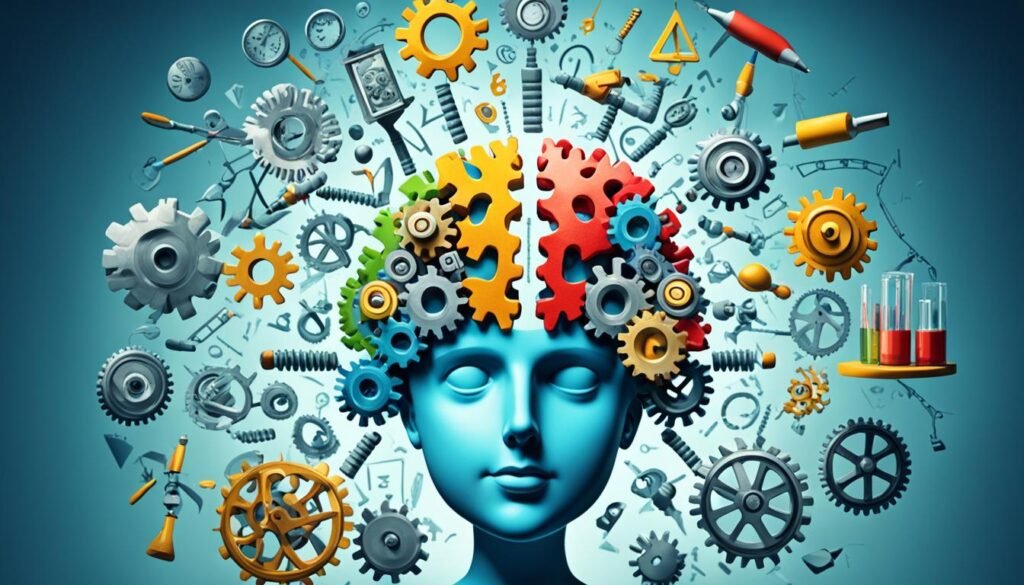
Active Learning Strategies That Incorporate Physical Activity
Making learning active can make it more fun and engaging. By getting students to move, they learn better and remember more. This approach also makes class time more enjoyable.
Using Movement to Engage Students During Lessons
Adding physical activities to lessons changes how students see the material. Activities like role-playing or stretching during talks keep students focused and interested. This approach boosts their enthusiasm and helps them learn better.
Physical Activity Breaks: Best Practices
Short breaks for movement keep students alert and ready to learn. These breaks refresh their minds, helping them focus better on what comes next. Here are some tips for these breaks:
- Do simple exercises like jumping jacks or stretches every 20-30 minutes.
- Play quick games that encourage teamwork and talking.
- Try mindfulness activities with some light movement.
Studies show that these breaks help students pay attention better and do better in school. You can read more about this in this research article. By adding movement to lessons and using smart breaks, teachers can make learning more effective.
Research Findings on Exercise and Academic Performance
Many studies show a strong link between exercise and doing well in school. Being active helps not just the body but also the mind for learning. You can learn more about exercise and school performance and how it affects students.
Studies Linking Physical Activity to Improved Grades
Studies show that being active helps students do better in school. Schools that make exercise a part of the day see students doing better. Kids who exercise regularly focus better and get more involved in class.
This shows how important it is to keep up with exercise to do well in school.
The Correlation Between Fitness Levels and Learning Ability
How fit kids are can really show in their school work. Being more fit means better thinking skills, like remembering things and solving problems. As kids get fitter, they can understand harder topics better.
Regular exercise helps make a strong connection between being active and thinking well. This shows that exercise is key to learning.

| Study | Findings |
|---|---|
| Active Schools Project | Students showed a 15% increase in math and reading scores. |
| Fit Kids Project | Regular exercise linked to improved focus and classroom behavior. |
| PE and Academic Performance | Schools with daily exercise programs saw a 20% rise in overall grades. |
Implementing Physical Activity in School Environment
Making learning fun and active can really help kids do better in school. Schools are key in adding physical activity to the day. They can use many ways to do this. These efforts help students live healthier and make classes more fun and engaging.
Effective Ways to Promote Classroom Movement
Getting kids to move in class can be done in many ways. Here are some good ideas:
- Give short breaks during lessons to keep students alert and focused.
- Let students use standing desks or work while standing to make learning more active.
- Do activities that mix learning with movement, like physical tasks tied to what they’re studying.
- Plan group activities that make students move around the room, helping them learn to work together.
The benefits of movement breaks for students are clear. These breaks help students pay attention better and behave better in class. This makes learning more effective.
Creating a Comprehensive School Physical Activity Program
A good physical activity plan helps schools make movement a regular part of the day. Here’s how to set one up:
- Look at how active everyone is now and find out what stops people from being active.
- Plan a mix of activities for after school, during recess, and in physical education classes.
- Get parents and the community involved in supporting physical activities at school events.
- Check how well the program is working and change it based on what students and teachers say.
Check out this resource for tips on good policies for data and user rights that can help with physical activity.
Using these ideas can make schools more active and help students do better in school. With careful planning and effort, schools can greatly improve students’ lives by encouraging a healthy, active lifestyle.
Encouraging Parents to Support Physical Activity at Home
Parents play a key role in getting kids to be active at home. By doing exercises together, families make moving a part of daily life. This not only boosts fitness but also helps with learning through different activities.
Activities Parents Can Promote for Learning Enhancement
Adding fun activities to your child’s day can really help with learning. Here are some ideas:
- Outdoor Games: Games like tag or hide and seek get kids moving and thinking.
- Dance Sessions: Dancing to music helps with coordination and memory, making it a great exercise.
- Educational Walks: Nature walks can be learning adventures, with talks about plants and animals.
- Yoga and Stretching: Simple yoga poses help with physical and mental health, improving focus.
The Role of Family in a Child’s Physical Development
Family has a big impact on a child’s physical growth. When families make exercise a priority, kids are more likely to do the same. Encouraging exercise at home builds a habit for a healthy life. Studies show that regular family exercise can boost kids’ thinking skills and grades. You can learn more about this here.

The Role of Recess in Academic Settings
Recess is key in schools, offering a chance for kids to play and move freely. It’s vital for their physical and mental health. Kids get to stretch, make friends, and explore, which helps them focus better when they return to class.
Short breaks during recess bring big cognitive benefits. Kids who move around before class can concentrate and focus better. These breaks also help kids learn and perform better in school. They feel happier and more energetic, ready to dive into their lessons.
Having daily recess is good for both the body and the mind. It makes school a happier place. Kids who love playing are more likely to pay attention in class. Making time for recess is key to creating a great place for learning.

The Importance of Being Active for Learning
Keeping kids active is key to boosting their learning skills. Being active helps improve their mental sharpness. It also makes them do better in school.
How Physical Fitness Contributes to Mental Acuity
Being fit is good for more than just health; it also makes the mind sharper. Regular exercise helps blood flow to the brain, which is good for thinking skills. Kids who exercise often focus better, remember more, and think creatively.
Encouraging kids to be active sets them up for better learning and success in school.
Long-term Benefits of Childhood Activity on Academic Potential
Being active as a kid has big benefits that last a lifetime. It helps kids stay healthy and do well in school. Studies show that active kids pay attention better and remember more as they get older.
For more info, check out this study on how being active affects school performance.
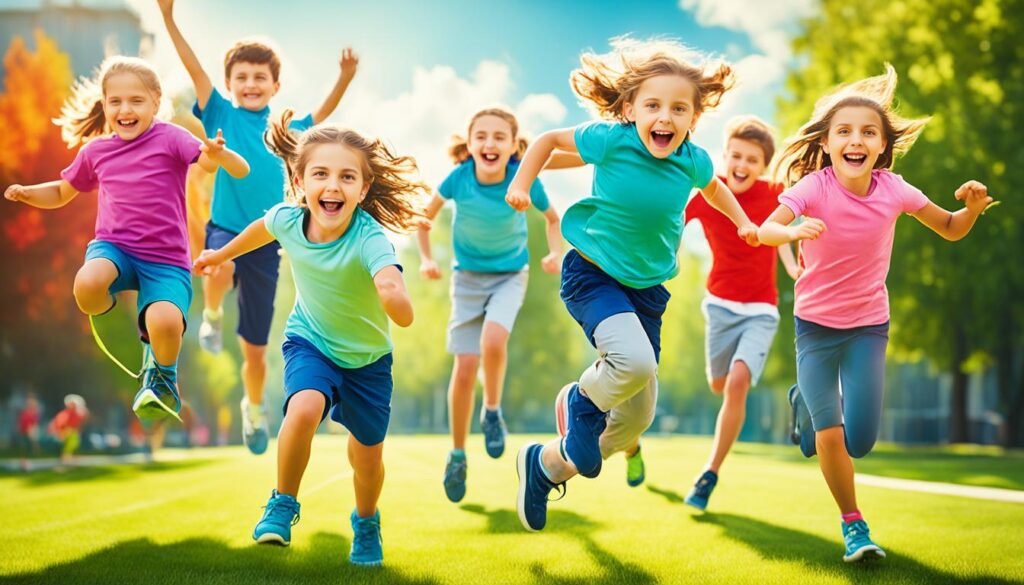
| Physical Activity Type | Short-term Effects on Learning | Long-term Benefits on Academic Success |
|---|---|---|
| Aerobic Exercises | Enhances concentration and focus during class | Improved grades in math and science |
| Resistance Training | Boosts self-confidence in schoolwork | Increased resilience toward challenges in learning |
| Team Sports | Fosters teamwork and social interaction | Development of leadership skills and cooperation |
Creating a Balanced Approach to Education and Activity
In today’s world, it’s key to blend education with physical activity for kids’ growth. This mix helps kids grow in both mind and body. It makes learning better and supports their overall health.
Finding the Right Mix of Study and Physical Exercise
Mixing movement into learning boosts focus and memory. Here are ways to do it:
- Incorporate Activity Breaks: Short breaks for exercise refresh minds and improve focus.
- Encourage Active Learning: Hands-on activities make learning fun and keep students moving.
- Promote Outdoor Learning: Lessons outside can make learning more exciting and inspiring.
- Track Progress: Setting goals in both schoolwork and fitness builds confidence and achievement.
By blending study and exercise, we make learning better and healthier. A balanced education approach does more than just improve grades. It sets the stage for a lifetime of wellness and success.

Enhancing Student Learning Through Physical Exercise
Regular physical activity is key for students. It brings many benefits that help with learning. Studies show that exercise boosts memory, focus, and problem-solving skills. Adding exercise to daily routines helps students stay fit and smarter.
Exercise boosts heart rates and blood flow to the brain. This helps students pay attention better in class. Just 30 minutes of activity a day can make students do better in school. Schools that focus on exercise help students do well in school and make friends.

Students with challenges in executive function get a lot from exercise. It lowers stress and anxiety, which can block learning. Taking breaks to move around helps students focus and remember things better. You can find more about this at this resource.
Think about how exercise helps students more than just staying fit. It’s key for better thinking and a positive school environment. Adding physical activity to students’ daily lives can greatly help their school success.
Overcoming Barriers to Physical Activity in Education
Adding physical activity to schools can be tough. But, by clearing up common myths, we can make it work. Many think that schools are too busy for exercise. But, with good planning, schools can fit in movement without losing important learning time. It’s key to understand these challenges to help students do better.
Addressing Common Misconceptions
Some think exercise takes away from learning. But, research shows it actually boosts brain power and keeps students engaged. Another wrong idea is that you need a lot of space or gear for exercise. Schools can use simple, low-cost ways to get students moving. Things like stretching or quick aerobic exercises can really wake up students.
Solutions for Schools Struggling with Physical Activity Integration
Your school can try these steps to get more movement:
- Use short breaks between classes to help students refocus.
- Play group games that don’t need much equipment to build teamwork and friendship.
- Have outdoor classes when the weather is good to combine learning with adventure.
- Use local resources for exercise to make sure all students can join in.
For more tips, check out ways to beat physical activity hurdles that fit your school. By fixing wrong ideas and using smart strategies, schools can make a place where being active is easy and fun. This helps students learn better.
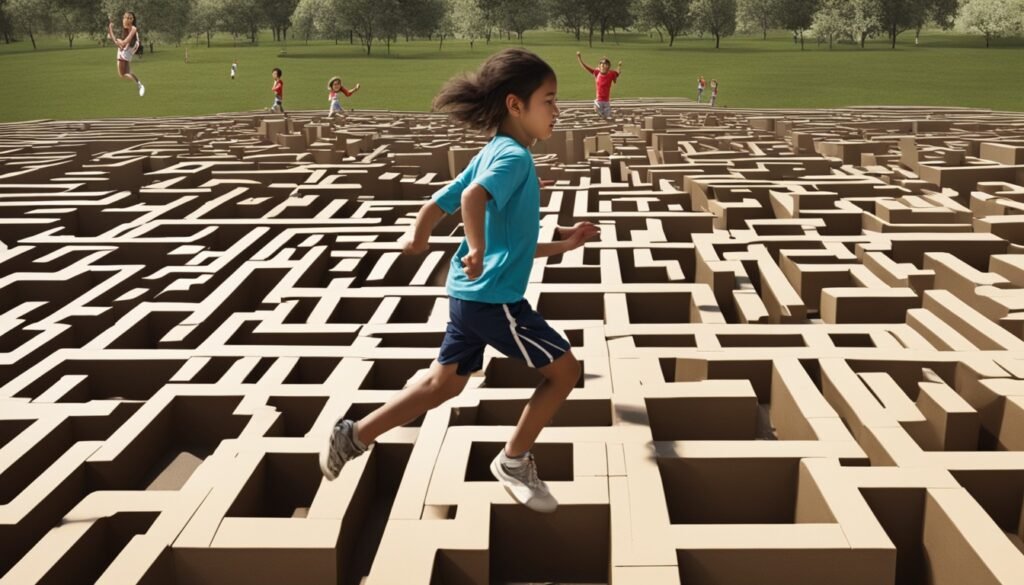
Promoting Classroom Movement for Better Learning Outcomes
Making classrooms more active helps students learn better. By adding promoting movement in classrooms, you make learning fun and boost brain power. Studies prove that being active in class keeps students focused and helps them learn better.
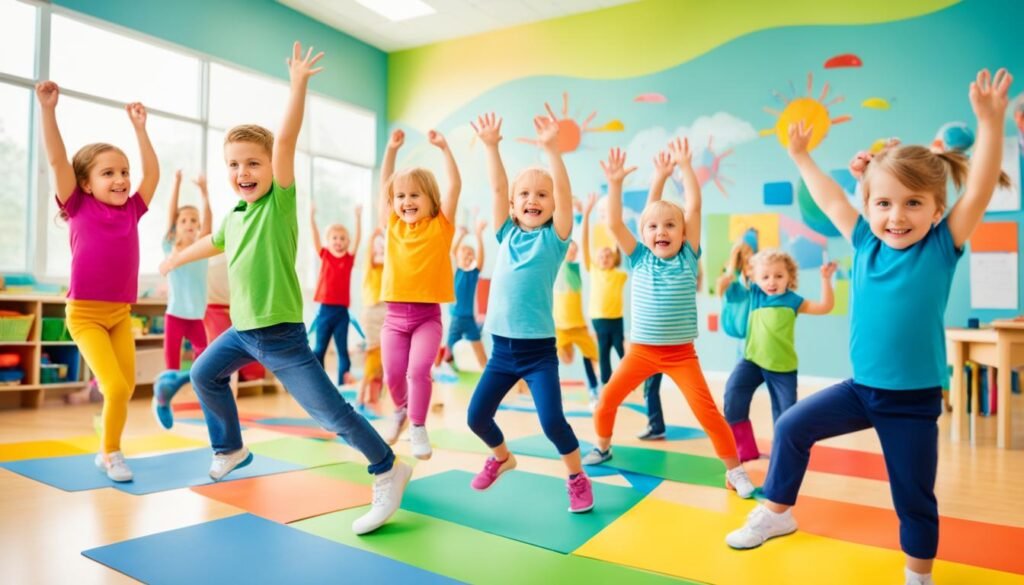
Using classroom strategies for better focus can be enjoyable and helpful. Simple actions like stretching or short exercises can help students pay attention better. The benefits of physical activity breaks include better focus and less stress, making learning more effective.
Here are some ways to get students moving in class:
- Start with short activity breaks every 30 minutes during lessons.
- Encourage students to participate in standing discussions or group work that requires movement.
- Use music to create a lively environment where students can dance or move during breaks.
These fun classroom strategies will make students more eager to join in and more excited about learning. Adding active learning not only makes the classroom more lively but also improves the learning experience.
Learn more about how physical activity boosts learning at the impact of movement on cognitive.
Conclusion
Regular exercise does more than just help kids stay fit. It also boosts their learning abilities. This article showed how physical activity improves thinking skills, memory, and mood. These benefits make learning easier and more effective.
It’s crucial to teach kids healthy habits early on. This affects their school performance and overall life. By encouraging active play and daily movement, you help kids develop a love for staying active. This sets them up for a life of good health and mental well-being.
Think about how you can add more movement to school and home life. Doing so will not only help with schoolwork but also teach kids the importance of staying healthy and active. This approach is key to raising a generation that values wellness and an active lifestyle.
